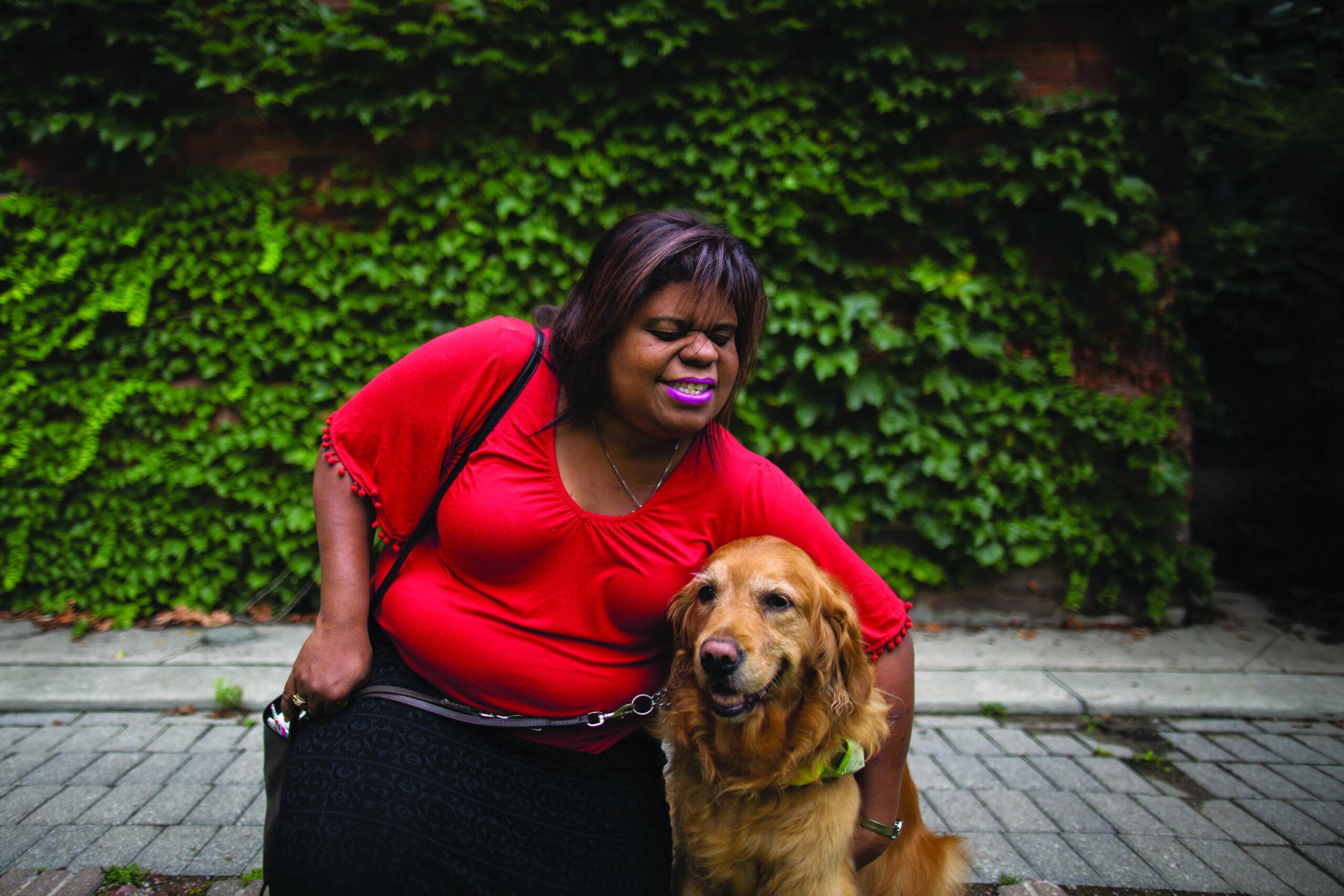Paid work has its flaws — day in, day out — but it also brings rewards. Having a job gives people a reason to get out of bed. A sense that they contribute. Money for the basics and more. People with physical or intellectual disabilities, however, struggle to find meaningful, regular and fairly paid work. Of the 14 percent of Canadians who have a disability — 3.8 million in total — just half are employed. About 795,000 of these unemployed people are capable of working, including 340,000 with post-secondary education, according to a federal panel that looked at disabled people and the labour market.
The application process can put people with disabilities at a disadvantage — by asking candidates with physical challenges to visit inaccessible buildings, for example — and prejudice impacts hiring decisions and how people get treated on the job. Employers fret over accommodations, yet most cost little ($500 on average), and 57 percent cost nothing at all.
You may unsubscribe from any of our newsletters at any time.
When companies hire people who are differently abled, everyone wins. One 2007 study from Australia found that 90 percent of people with disabilities did as well or better on job performance than their non-disabled colleagues. Workers with a disability also tend to be loyal, with a higher staff retention rate. And being an inclusive employer is great for a business’s public image.
To mark Disability Employment Awareness Month, we found four Canadians with a disability who have made work actually work for them.

Alexander Saab, barista and business partner
“Dishpan hands,” says Alexander Saab, holding out his palms. That’s one of the reasons he didn’t enjoy working as a dishwasher.
The 35-year-old Torontonian has trisomy 18, or Edwards Syndrome, a genetic condition that leads to intellectual disabilities. For many years, dishwashing was the only work Saab could get. He started his first gig at a cafeteria when he was about 18. “It was boring, but I got out at three o’clock, so that was pretty good,” he recalls.
After finishing high school, he went to Humber College in Toronto for the Community Integration through Co-operative Education program, which is designed for people with developmental disabilities. For two years, he took courses in subjects like police and paramedic studies and discovered he was good at working with people. The college’s career centre helped him get a job: dishwashing at a fast-food franchise. He’d hoped for more.
Saab received government disability benefits (and still does), but it wasn’t enough to support himself. “I wanted to move out,” he says. “Living on your own is supposed to be like being more independent, doing things yourself, whatever you can.” By this time, his younger brother and sister had already left the family home. He, too, wanted his own place — and his own cat.
So he washed dishes, careful to not make more than about $300 a month, which would cause his benefits to be clawed back. Bored, and with dishpan hands, he asked if he could serve customers. His employer refused, saying he didn’t have the math skills.
Saab can operate technology — today he’s a whiz on his smartphone and tablet — and he knew that a cash register could help with making change. “I was a bit upset,” he recalls. “I knew I could do more.
In 2010, his mother died in a drowning accident, leaving Saab to live alone with his father. Once he dealt with his initial grief, he was more determined than ever to get out on his own.
Luckily, in 2012, his brother heard about a social enterprise called Common Ground Co-operative, which creates employment opportunities for people with developmental disabilities. Saab got training as a barista and learned to operate a cash register. After apprenticing, he got voted in as an actual partner who gets to make decisions regarding the business. He began working at Coffee Shed, a busy kiosk near Queen’s Park that serves snacks and drinks and does catering, too. A job coach is often on hand to support everyone, and scheduling and administrative staff make sure no one makes so much that their benefits are reduced.
In 2014, Saab moved into his own apartment, an affordable housing unit near the Toronto waterfront. He also got a cat: a Russian blue named Logan.
Saab’s calendar is full these days. He slots wake-up reminders so he’s at work by 7 a.m. some days to open the kiosk by himself. Every Friday, he and his job coach organize the dairy order, and then Saab calls it in. There are workplace social events he always attends (he’s developed a taste for craft beer, particularly porters), and his colleagues are now his friends. While he once lived at home, dependent on his parents, he now does grocery shopping for his elderly dad and buys him a lottery ticket every Wednesday.
In the future, Saab would consider working in a different coffee shop. He loves the routine of work, the social aspects, the responsibilities and the complexity of making hot drinks. “I’ll stay doing coffee. I like it.”

María-Luisa Ascencio, interpreter
María-Luisa Ascencio was thrilled when she landed a job at a major Canadian bank in 2009. For the very first time, her employer accommodated her needs, giving her an accessible computer keyboard and desk. “It was the biggest deal ever for me,” says the Burnaby, B.C., resident, who has severe rheumatoid arthritis. But her hopes were short-lived. On her first day, she walked into a meeting and someone called out, “This is María-Luisa, and she’s disabled!” Everyone spoke slowly and loudly to her, as if she were stupid. “The only thing they could see was my disability,” she says.
Ascencio, 67, lives with chronic pain in her joints and bones. Her hands have fused to her wrists, and she needs a scooter to travel longer distances. She also has fibromyalgia, which causes pain all over her body.
Despite these challenges, Ascencio has worked steadily for the past two decades, taking just a few months off here and there when her health demanded it. She began her career as a psychologist in Mexico and stayed home for a few years with her three kids after immigrating to Canada in 1993. She was doing college courses in law and psychology in 1997 when, studying late one night, she felt like she’d come down with a terrible cold. In the morning, she could not get out of bed. “I was immobilized. My entire body was not responding.” Her physiotherapist would cover her in ice to quell the fever and pain.
After four months of doctors’ visits and testing, she had a name for her disease. (The fibromyalgia diagnosis came a few years later.) She started on arthritis medication, and while her symptoms were nowhere near under control, she was ready to work. “I feel like I’m dying when I stay at home.”
Ascencio reasoned that she might as well sit in her car instead of on her couch, so she got a job doing deliveries for Canada Post. Then she did a series of increasingly demanding office jobs. At one point, she was getting 200 emails a day. She got divorced and lost her dad, and put in longer hours than ever, immersing herself in work to escape her grief. The stress made her illness worse.
After burning out, she went to the Neil Squire Society, which helps disabled people overcome workplace barriers, and that led to the bank job in 2009.
By 2011, she’d left, traumatized by how she was treated. The experience made her refuse to seek accommodation (such as an accessible keyboard and extra time) when writing the mortgage broker’s exam, so she failed three times and was unable to take the test again. A return to Neil Squire helped her accept a difficult reality: no more office jobs, no more high stress.
Finally, just over a year ago, Ascencio found the ideal position to fit her active mind and physical limits. She now works with the Canada Border Services Agency and the Immigration and Refugee Board of Canada, acting as a face-to-face Spanish-English interpreter at the Vancouver airport and downtown.
Ascencio is chatty, outgoing and caring, so the job suits her personality perfectly. “The people I work with are the sweetest,” she says. “There hasn’t been one officer who hasn’t offered me a chair when I needed it.” The government pay has appeal, too. She can sit or stand, whatever feels best, and doesn’t have to sit at a desk for hour upon painful hour. Colleagues know about her disability but don’t make a fuss. She also has time with her three adult kids. “This is the best job I have ever had.”

Kieran Wyper, software consultant
Kieran Wyper has such an eye for detail that he can spot discrepancies in long lists of numbers. Home-schooled as a teenager, he designed his own curriculum, learning about electronics and circuitry and studying Japanese. To feed his love for music, he even did a half-year hands-on program at an audio recording studio.
The 20-year-old from Langdon, just outside Calgary, was diagnosed around age 13 with autism spectrum disorder (ASD) or what used to be called Asperger’s. He never completed his high school diploma — “The big struggle was getting through the stuff I didn’t care about, the stuff I knew I would never use” — but may write the equivalency test someday. “I got a big fat textbook that looks like an encyclopedia, and I pretty much memorized it,” he says.
For paid gigs, he tried his first summer job at 16 with a local landscaping business. But along with his ASD, Wyper has juvenile idiopathic arthritis, and the work caused it to flare painfully. He also didn’t like being ordered around by his co-workers.
He worked for a month before the physical pain and social discomfort caused him to quit. A year later, he signed on at a popular coffee chain. He found that the walk-in freezer bothered his hands, and his boss expected him to learn myriad tasks with perfunctory training. “I’m not a particularly slow learner, so I’m not sure how most people would do,” he says. After a week, he left.
At a crossroads at age 18, Wyper heard about Meticulon. The Calgary company hires people with ASD and trains them in software testing and quality assurance — tasks like debugging code and testing programs. Employees work on contracts with third-party companies and are in constant touch with an employment co-ordinator for support.
Within months, Wyper was on the job, doing things such as combing through lengthy spreadsheets of numbers, looking for errors in formulas. He gets paid a good salary and has been spending some of that money going to concerts with friends. “I used to be a bit of a shut-in,” he admits. Work has made him happier and more motivated. He might go back to school to study game design or studio recording, but he’s keen to stay at his current job for the foreseeable future. “I’m still learning here and building up my skills.”

Sharon Brant, administration officer
Sharon Brant credits her mother for giving her the right attitude in life to succeed. “She wanted me to do as many things as I possibly could. And that’s what I’ve done all my life,” says Brant, who is blind. She lost her mother earlier this year.
Brant, 52, has worked for 30 years at the privacy commission of Ontario. Together with her guide dog, she commutes over an hour each way between downtown Toronto and her home in Scarborough on public transit. She also advocates for people with disabilities as an ambassador for the Rick Hansen Foundation and moonlights as an actor. Recently, in the movie Fahrenheit 451, Michael B. Jordan (best known as the villain in Black Panther) takes a braille book from her so he can burn it. “He’s a cool guy,” she says.
Brant was born in Guyana and was exposed to the rubella virus at birth. This led to poor sight in early childhood and complete vision loss by age nine. The school system there had no resources to teach her braille, so she had to leave school. “That’s one of the reasons my mom came to Canada,” she says.
Brant, her mom and brother immigrated when Brant was 13. At her first Canadian school, she was inexplicably placed in a class for people with severe intellectual disabilities. By high school, though, she was doing the main curriculum. “My goal was to be like everybody else, to complete things like everybody else.” She wrote her assignments on a braille typewriter and then retyped them conventionally for the teacher or had someone else help with that task. Everything took twice as long, so she did night courses and summer school to get all her credits.
After graduation, Brant wanted to go to college, but there were too many barriers at the time, including the high cost of braille books. So she applied for jobs and got a contract position at the privacy commission in 1988 through a disability hiring program. No one knew what to do with her at first. “I’m photocopying, and I don’t know what the paper says.”
She worked in various capacities around the office, using screen-reader programs that translate computer text to speech, and vice versa. (The technology wasn’t so great back then, but today Brant uses a very polished software called JAWS.)
She would sub in at reception for breaks. People started asking where the “nice lady” was. After nearly a decade at the organization, she was formally hired as a receptionist. She helps clients face-to-face and answers the phone. Over the years, she’s had to study the province’s privacy act and keep up with ongoing policy changes. “I’ve always been really good at explaining things,” she says. Her lack of sight seldom gets in the way. However, once she directed a woman with a deep voice to the men’s room.
One of Brant’s supervisors in the early years didn’t get it. “Why don’t you get someone who can see to do that?” she once asked while Brant was making braille labels for some file folders. The supervisor would give her little to do or make her complete work over again. Brant eventually reported this behaviour to management, and her complaint, as well as those from others, soon led to the person’s dismissal.
Brant is married and has two sons — one 26 and the other just nine. She thinks her career shows her boys what’s possible. But she also makes the commute every day — a task that’s exhausting for her eight-year-old guide dog, Sofie, who will need to retire soon — because she needs the stimulation of a job. “When I had my kids, I loved them, but when they were asleep I was like, ‘Okay, now what do I do? This is boring.’”
This story first appeared in The Observer’s October 2018 edition with the title “Job opening.”














